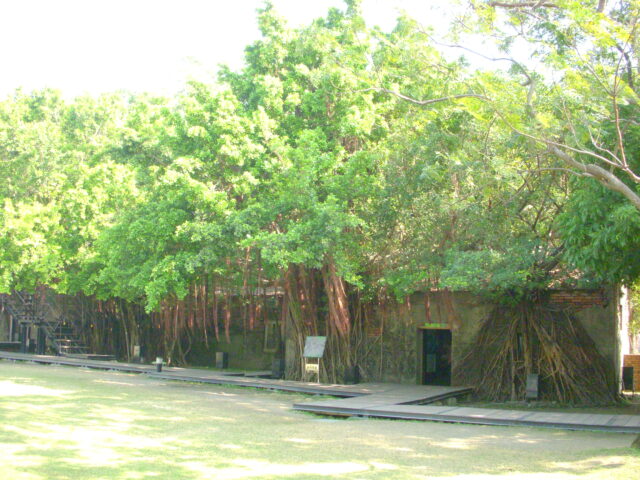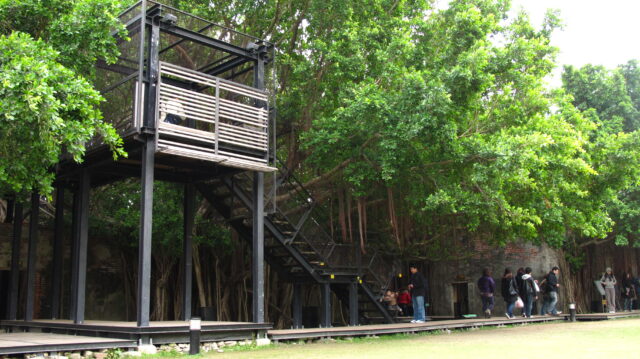Nestled within the bustling city of Tainan, Taiwan, lies a hidden gem that captures the imagination and curiosity of both locals and tourists alike. The Anping Tree House, a structure that has been reclaimed by nature, stands as a testament to the relentless power of the natural world and the beauty that can emerge from the ruins of human habitation. Explore the enchanting story of the Anping Tree House, its history, the natural phenomena that have shaped it, and its significance as a cultural and tourist attraction.
Exploring the beauty of the Anping Tree House

The Anping Tree House wasn’t always the captivating spectacle it is today. Originally, it served as a warehouse for the Tait & Co. merchant house in the late 19th century. Over the years, the building was abandoned, and nature began its slow but unyielding conquest. The banyan trees surrounding the structure saw an opportunity in the deserted edifice, slowly intertwining their roots and branches with the building’s framework. This unique merger of architecture and nature has transformed the site into a surreal landscape, where the lines between the man-made and the natural blur.
Visitors to the Anping Tree House are greeted by a scene that seems lifted from the pages of a fantasy novel. The roots and branches of the banyan trees have woven themselves into the walls, floors, and ceilings, creating a living maze that is both eerie and mesmerizing. The way the sunlight filters through the dense canopy, casting dappled shadows on the ruins, adds to the mystical atmosphere of the place. It’s a vivid reminder of the power of nature to reclaim and beautify even the most forgotten spaces.
The natural phenomena behind the Anping Tree House

The transformation of the Anping Tree House from a man-made structure to a natural wonder is a fascinating process that highlights the resilience and adaptability of nature. The banyan trees, known for their ability to send down aerial roots from their branches, found the abandoned warehouse a perfect host. These roots, upon reaching the ground, turn into thick, woody trunks that can support the weight of the growing tree. Over time, the original walls and roofs of the building have become scaffolds for the expanding network of roots and branches.
This natural phenomenon is not just a spectacle of beauty but also a lesson in resilience and coexistence. The Anping Tree House serves as a living laboratory, showcasing how plant life can adapt to and thrive in the most unlikely of environments. It’s a powerful symbol of nature’s ability to regenerate and flourish, even in places marked by human abandonment and decay. The site encourages us to reflect on our relationship with the natural world and the importance of preserving and respecting our environment.
The Anping Tree House’s role as a cultural and tourist attraction

Beyond its natural allure, the Anping Tree House holds significant cultural and historical value. It stands as a relic of Taiwan‘s rich trading history and its interactions with foreign merchants. The warehouse was once a bustling hub of activity, playing a crucial role in the trade of salt, camphor, and other goods. Today, the site has been transformed into a museum, offering visitors insights into its past through photographs, artifacts, and informative plaques.
The Anping Tree House has also become a must-visit destination for tourists seeking unique experiences. Its blend of history, architecture, and natural beauty offers a captivating exploration for those looking to delve into the stories of the past while being surrounded by the wonders of nature. The site has been thoughtfully preserved and adapted, with staircases and viewing platforms allowing visitors to navigate through the intertwined roots and branches safely. It’s a place where history and nature converge, offering a serene escape from the hustle and bustle of modern life.
The role of the Anping Tree House in environmental education and conservation

The story of the Anping Tree House is not just one of aesthetic beauty or historical interest; it also plays a crucial role in environmental education and conservation. The site serves as a tangible example of the importance of ecological balance and the potential for harmonious coexistence between human-made structures and natural ecosystems. It offers a unique opportunity for educators to discuss topics such as biodiversity, the impact of human activity on the environment, and the principles of sustainability.
Moreover, the preservation of the Anping Tree House highlights the value of conserving such unique sites for future generations. It demonstrates how abandoned or neglected spaces can be repurposed and integrated into the natural environment rather than being demolished or left to deteriorate. This approach not only protects the ecological integrity of the area but also enriches our cultural heritage, providing a space for reflection, learning, and inspiration.
More from us: New York’s Red Hook Grain Terminal: A Financial Disaster From Day One
In a world where the impact of human activity on the environment is increasingly scrutinized, the Anping Tree House serves as a beacon of hope. It exemplifies how conservation and thoughtful preservation can lead to the creation of spaces that remind us of the importance of living in harmony with the natural world. As we move forward, let the Anping Tree House inspire us to seek out and cherish such places of beauty and significance, for they are vital to our cultural heritage and the health of our planet.
